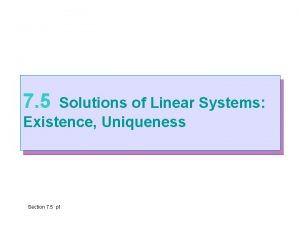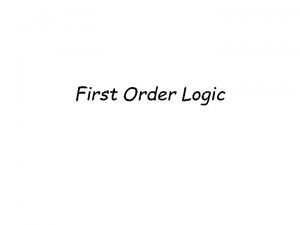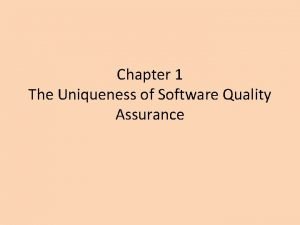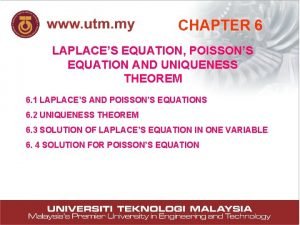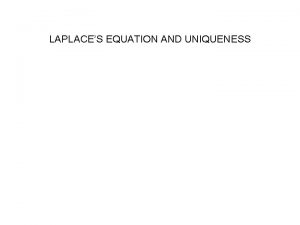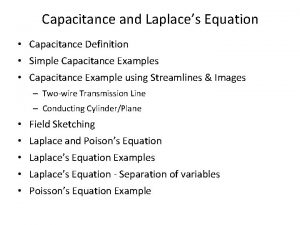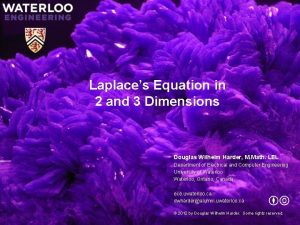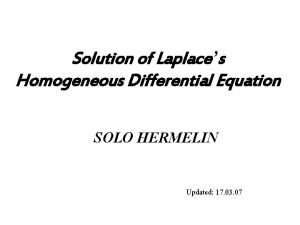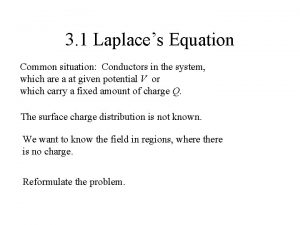LAPLACES EQUATION AND UNIQUENESS A region of space








- Slides: 8

LAPLACE’S EQUATION AND UNIQUENESS

A region of space contains no charges. What can I say about V in the interior? =0 throughout this interior region A) Not much, there are lots of possibilities for V(r) in there B) V(r)=0 everywhere in the interior. C) V(r)=constant everywhere in the interior

A region of space contains no charges. The boundary has V=0 everywhere. What can I say about V in the interior? V=0 =0 A) Not much, there are lots of possibilities for V(r) in there B) V(r)=0 everywhere in the interior. C) V(r)=constant everywhere in the interior

Two very strong (big C) ideal capacitors are well separated. What if they are connected by one thin conducting wire, is this electrostatic situation physically stable? -Q - + + +Q + + + A)Yes B)No C)? ? ? -Q- + + + +Q + + +

Two very strong (big C) ideal capacitors are well separated. If they are connected by 2 thin conducting wires, as shown, is this electrostatic situation physically stable? -Q- + + +Q + + +_ A)Yes B)No C)? ? ? -Q- + + + +Q + + +_

Is this a stable charge distribution for two neutral, conducting spheres? (There are no other charges around) - - A) Yes B) No + + + - - C) ? ? ? + + +

General properties of solutions of 2 V=0 (1) V has no local maxima or minima inside. Maxima and minima are located on surrounding boundary. (2) V is boring. (I mean “smooth & continuous” everywhere). (3) V(r) = average of V over any surrounding sphere: (4) V is unique: The solution of the Laplace eq. is uniquely determined if V is specified on the boundary surface around the volume.

If you put a + test charge at the center of this cube of charges, could it be in stable equilibrium? +q +q A) Yes B) No C) ? ? ? Earnshaw's Theorem +q +q +q
 Lesson 3 existence and uniqueness
Lesson 3 existence and uniqueness Existence and uniqueness theorem
Existence and uniqueness theorem Three fundamental principles of fingerprints
Three fundamental principles of fingerprints Uniqueness factor analysis
Uniqueness factor analysis The uniqueness of the bible
The uniqueness of the bible Uniqueness quantifier equivalence
Uniqueness quantifier equivalence The study of the uniqueness of friction ridge structures
The study of the uniqueness of friction ridge structures Outline of jesus life
Outline of jesus life Uniqueness of software quality assurance
Uniqueness of software quality assurance

